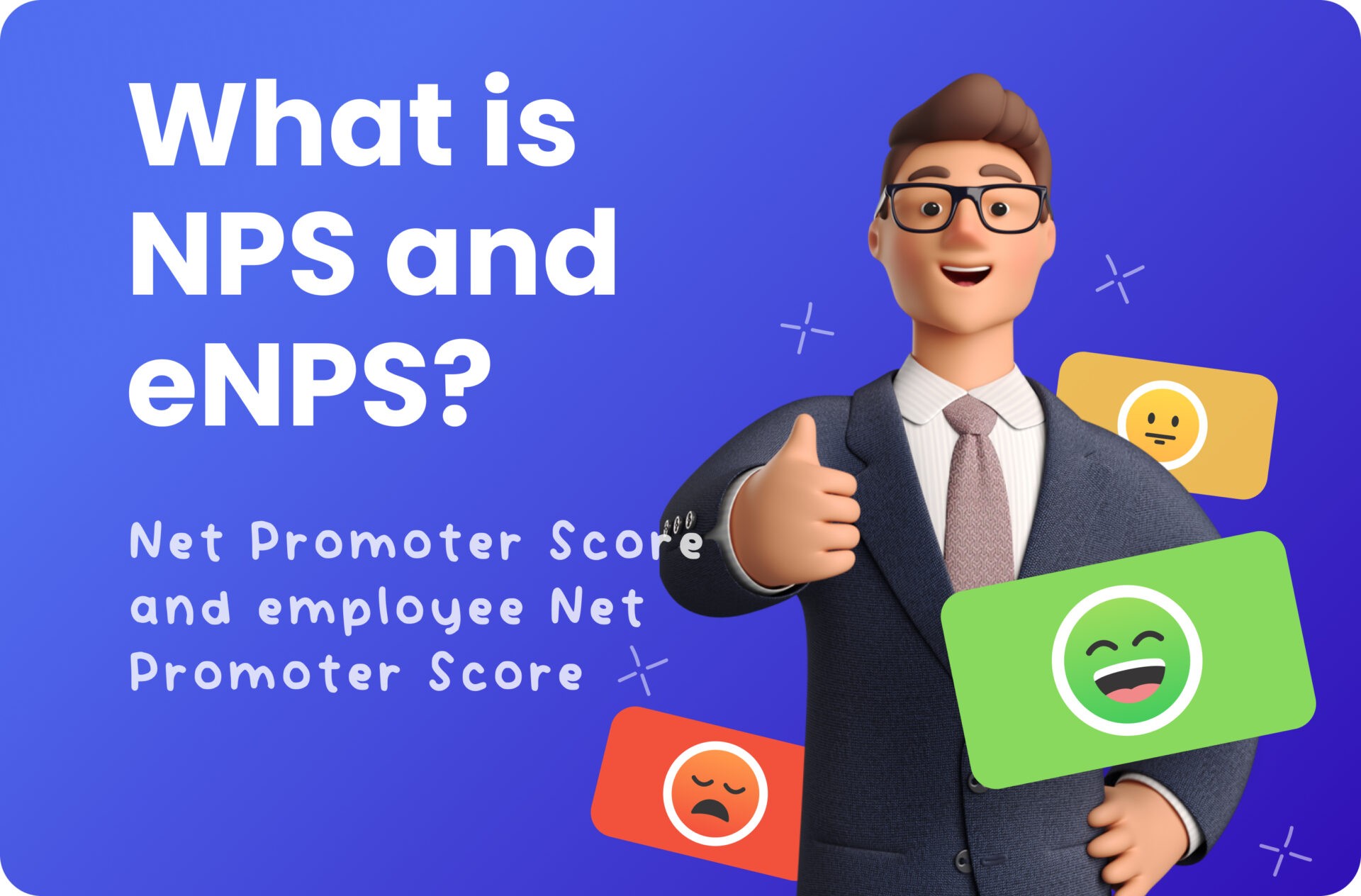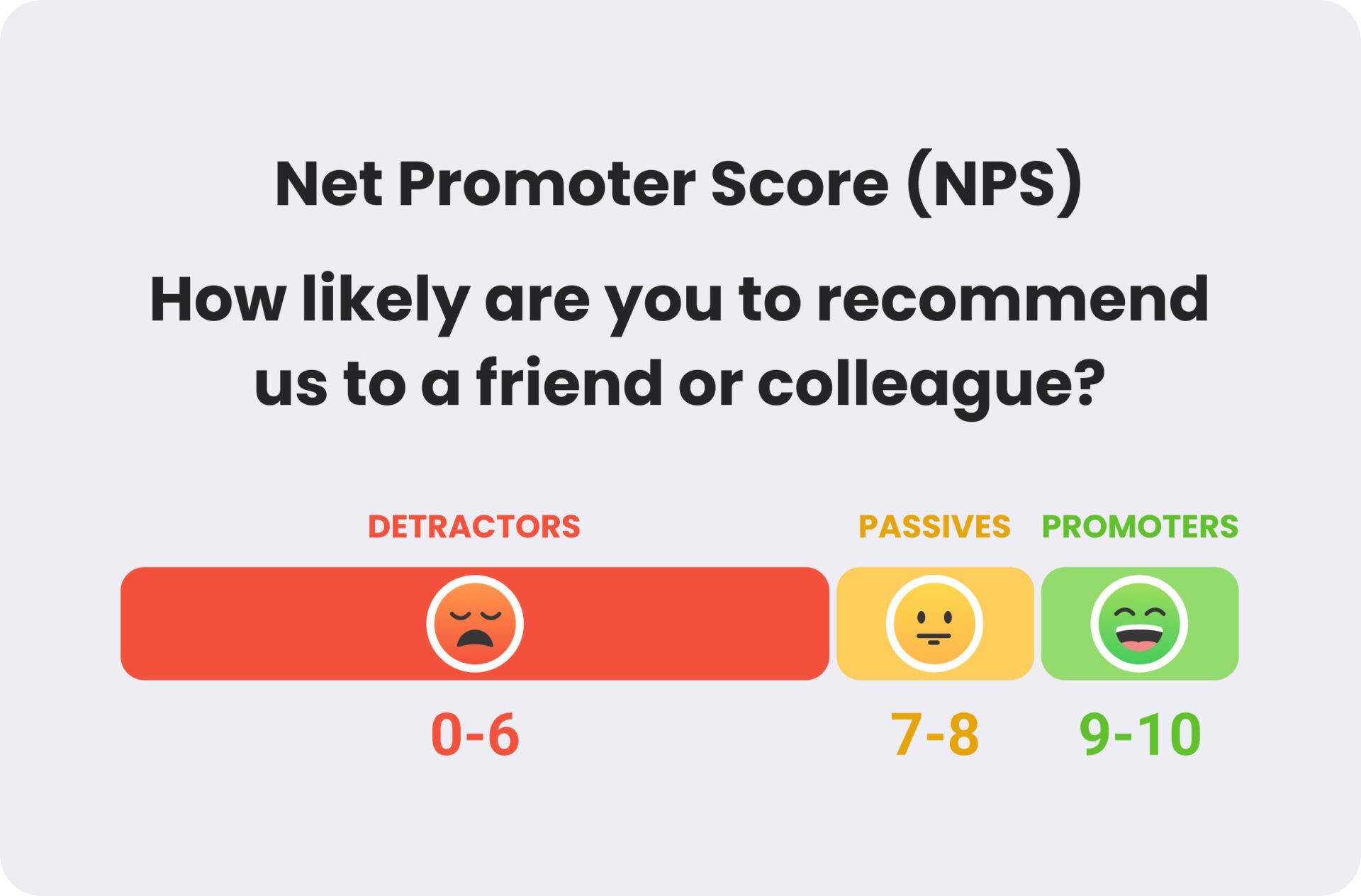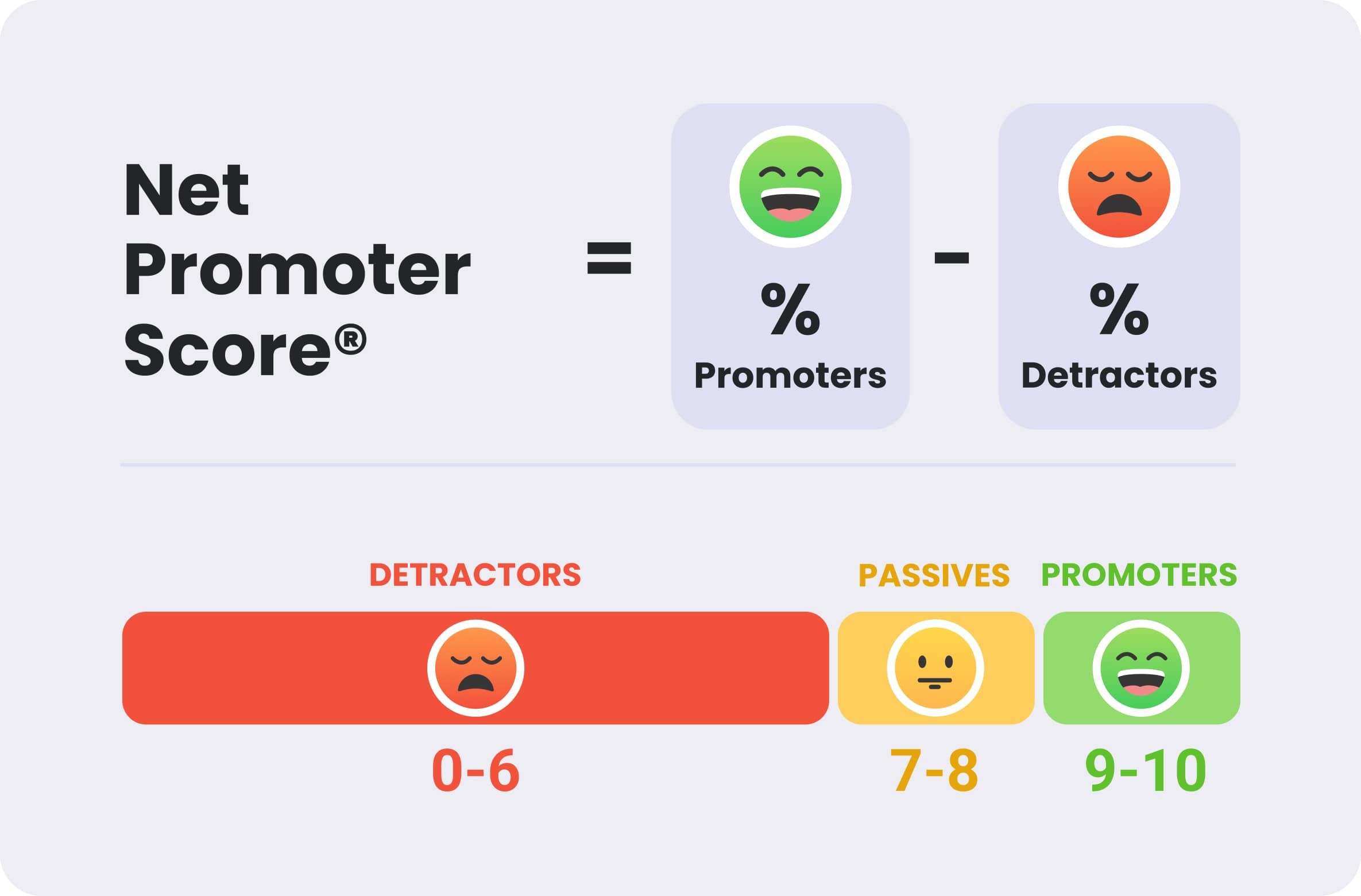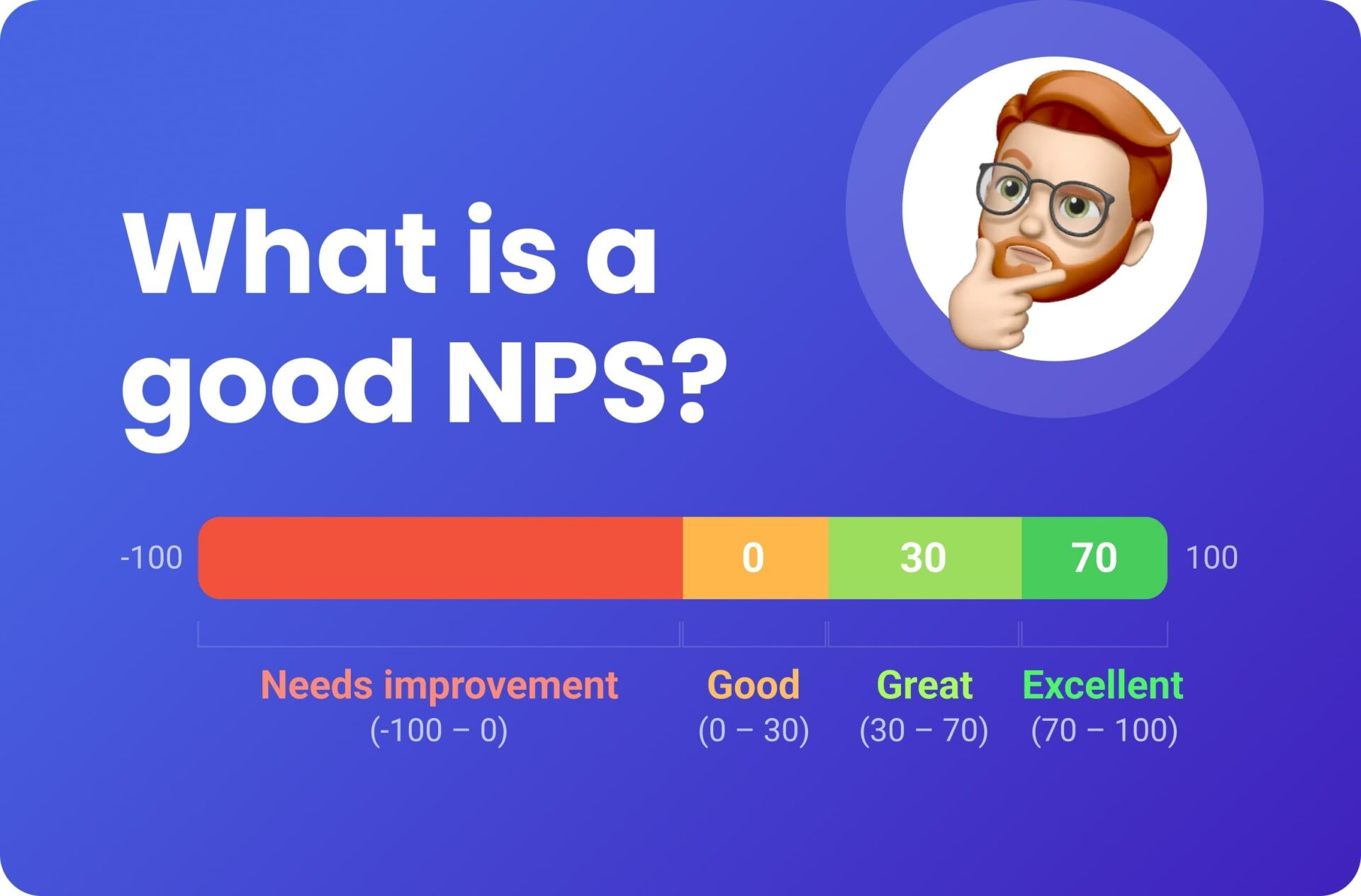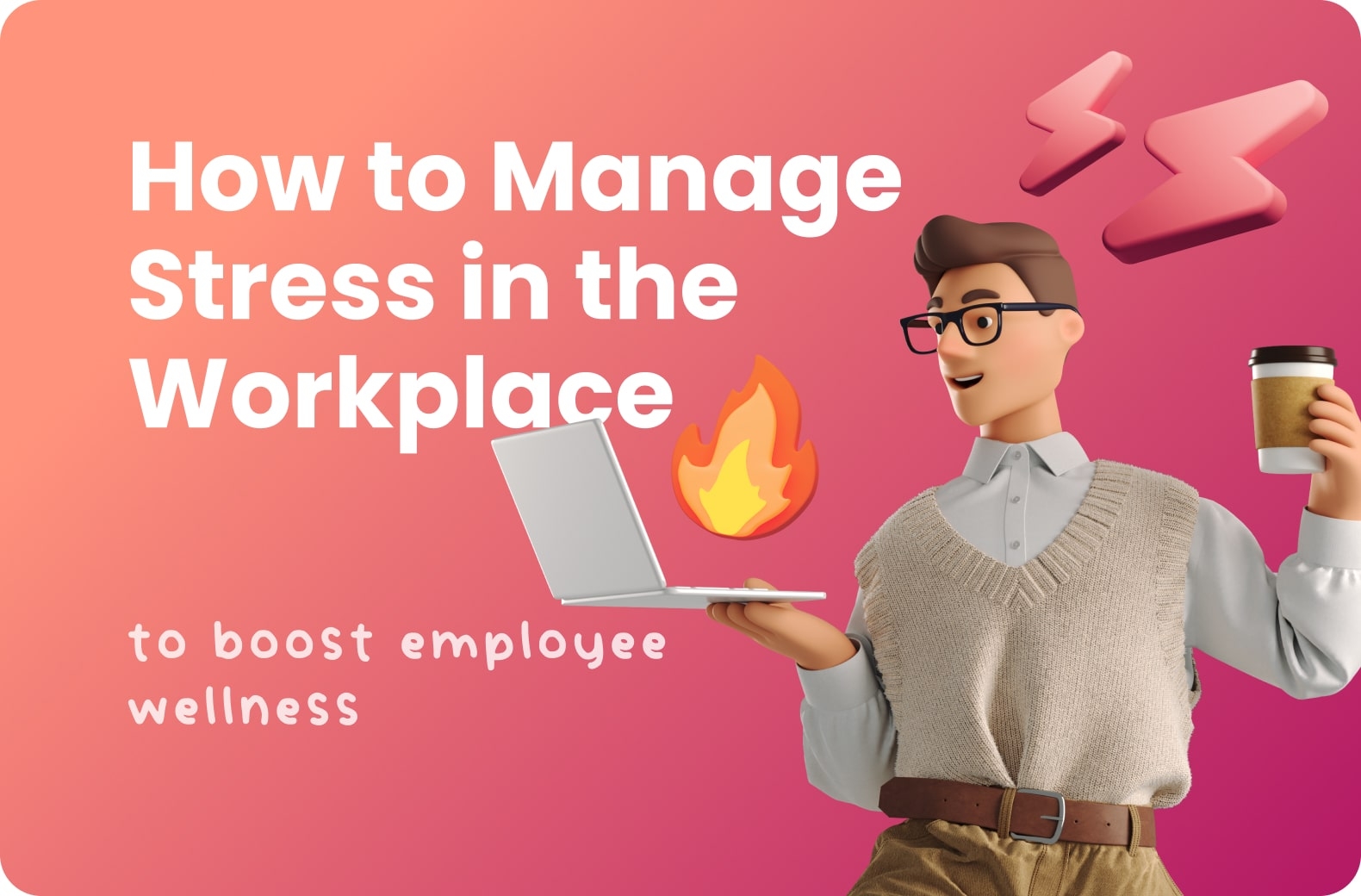What you can expect this article to cover:
- What is Net Promoter Score (NPS)
- Is NPS beneficial for B2B companies
- How to сalculate NPS
- How to use eNPS сorrectly to prevent unhappy employees
- When to use eNPS calculation
- What’s a good NPS score for positive business performance
- Using Screver to track and analyze NPS
- Real-time dashboard with NPS insights
- Collecting feedback and insights
Net Promoter Score (NPS) and employee Net Promoter Score (eNPS) are essential metrics for gauging customer and employee satisfaction, as well as assessing company loyalty. NPS is still relevant today, more than two decades after it was first introduced. After all, this invaluable metric reveals how likely customers and employees are to recommend a company to others and continue working with them.
Poor Net Promoter Score signals an urgent need to tweak strategies and provide a better experience. But before taking concrete steps, it’s crucial to have an in-depth understanding of NPS.
What is Net Promoter Score (NPS)?
Net Promoter Score (NPS) is a way for businesses to track employee and customer satisfaction, loyalty, and the likelihood of repeat purchases or continued interactions. It is among the essential tools for driving a successful customer and employee journey. NPS definition typically highlights the correlation between happy customers and employees and business growth.
According to Net Promoter System by Bain & Company, an industry’s Net Promoter leaders surpassed their competition by a factor higher than two times.
Hence, an organization’s Net Promoter score is a reliable hint of its future growth levels. But when calculating customer loyalty, the connection between NPS and business advancement is more prominent in industries where customers can choose between multiple players, giving them genuine choices.
To show an accurate NPS, it should be easy for people to switch product or service providers. Also, the industry a company is in should ideally be mature so that implementation and purchases are simpler.
The NPS was introduced in 2003 by Fred Reichheld, a partner at Bain & Company, who worked with Satmetrix. Their goal was to create a novel way of calculating how well a company treats its customers, consumers, and employees and whether that treatment leads to a lasting connection and loyalty.
That idea never changed. Companies still use surveys to determine the odds of their respondents recommending their workplace, products, or services to family, coworkers, friends, and acquaintances.
Although the question may be modified slightly, but the overall idea is always the same:
- NPS for customers: “How likely are you to recommend us to a friend or colleague?”
- NPS for B2B partners: “How likely are you to recommend us to a partner or colleague?”
- eNPS: “How likely are you to recommend us as a place to work to a friend or family?”
Every company can formulate the question differently, but customers always get the rating option that reflects their satisfaction with the brand. The responses also place every respondent in one of the three categories:
- Promoters:
These respondents are the most likely to recommend a company, as they opted for the 9-10 score. They would gladly share their positive reviews about a company with their friends and family and stay in the workplace for extended periods.
- Passives:
Since these respondents chose the 7-8 score, they are passive and probably wouldn’t criticize or praise the company.
- Detractors:
These individuals rated 0-6 due to having had a negative experience with the product, service, or company. They might discourage potential clients, buyers, or job seekers from interacting with or buying from a business by spreading negative word due to being unhappy customers and disengaged employees.
Is NPS beneficial for B2B and enterprises?
Enterprises and B2B leaders often disregard the NPS because most guides and instructions associate it with B2C. Contrary to popular belief, this score is just as significant and efficient for B2B companies.
Net Promoter Score surveys can help them gain invaluable insights, improve employee satisfaction, and attract more clients. Here’s why:
Higher response rate
Although B2B might have fewer clients due to the market size, they typically nurture more tight-knit relationships. Thanks to that, they will have an easier time encouraging people to fill out NPS surveys and boost the response rate.
Receiving enough information and feedback is essential for high-quality NPS data. That also correlates with higher employee engagement, resulting in more accuracy and fewer selection inclinations. Thanks to that, managers can be more confident about the data, enabling better decision-making and increased customer and employee retention.
Responding to feedback is faster
B2B market size presents an advantage over B2C, as the latter must go through thousands of NPS survey comments and responses. They often struggle with addressing the issues detractors mentioned.
On the other hand, B2B companies can assess these surveys faster and introduce necessary changes that would turn passive respondents into promoters and detractors into passives. Moreover, they typically receive more meaningful, actionable, and relevant feedback due to cultivating closer connections with people, opening a path to customer satisfaction.
Employees are more likely to suggest helpful ideas
Unlike B2C, B2B companies can allow more experimentation and changes. Thanks to that, they can encourage workers to suggest ideas for improving their products, services, and employee experience.
That is necessary for introducing innovative solutions and outperforming competitors. But here are all the reasons B2B shouldn’t skip eNPS surveys.
Easy and fast measurement method
The right tool makes it easy to find your Net Promoter Score without any training or special preparations. Engaging online surveys are an effective way to collect data from respondents with little effort. The questionnaires can be shared via email, sms, QR codes, or embedded on a website or app.
Using online surveys for compiling NPS data is also easier on B2B teams because the information evaluation process is fast-paced and easy to carry out. Moreover, they can find industry NPS benchmarks in no time, as many competitors already use this metric.
In other words, managers can see how their employee experience programs perform compared to others. Additionally, a company’s high Net Promoter Score could be used as a selling point to lure in top talent.
NPS helps forecast employee turnover and growth outlook
B2B companies can foresee their business growth and employee turnover rate by identifying how many detractors and promoters they have. NPS survey helps them determine the number of individuals willing to spread the good word about their workplace.
These insights are essential for planning and preparing future strategies. Net Promoter Score lets companies understand what enthusiastic customers and employees like about them and how to reinforce their strengths. They can leverage data-driven decision-making instead of relying on their hunches and gut feelings.
NPS highlights pain points and advantages
The best way to discover a company’s strengths and weaknesses are to reach out to customers and employees. B2B companies should calculate NPS to uncover people’s most common issues with the workplace or company’s products and what it takes to address them.
Open-ended NPS survey questions will highlight what makes promoters love the work environment or product and why detractors, on the other hand, have a hard time connecting with it. Hence, B2B companies can use the insights from their Net Promoter Score to tweak their approach, provide a more well-rounded and personalized experience, and attract high-quality candidates.
Here’s everything you should know about the NPS formula and NPS calculation.
How to calculate NPS
To calculate your Net Promoter Score, look for the percentage difference between detractors and promoters. According to the NPS formula, a score is always an absolute number between -100 and +100.
If the NPS survey results show that 30% of respondents are promoters, 50% are passives, and 20% are detractors, your NPS score is +10. A positive NPS is anything above zero.
Remember never to add a percent sign behind your Net Promoter Score, as your NPS is always a numerical value. But NPS isn’t limited to measuring employee and customer happiness.
Instead, you can use this formula to gauge the success of your stores, specific products, and team members. Net Promoter Score can also help you guide your marketing strategy, stay ahead of your competition, and prevent people from spreading the negative word about your company.
When calculating your Net Promoter Score, add demographic questions (e.g., age, gender, location, income) that give more detailed information about your customers. The most important is to ask them to rate the odds of doing business with you again.
However, ask your customers and employees about the reasoning behind their rating and how you could improve their experience.
How to use NPS correctly to prevent unhappy employees
It may not be enough to run the eNPS survey and calculate employee Net Promoter Score. Having a positive numerical value still doesn’t mean everyone loves your company, and you can celebrate the results with a team happy hour.
The technical part is only one aspect of your Net Promoter Score. Hence, the online survey is only the beginning. If you want to use your Net Promoter Score adequately, you must understand what made detractors lose trust in your company.
After all, your employees use various factors to form their viewpoints. Consider your company branding, reputation, employee benefits, values, mission, and company culture.
When your stakeholders reach out, worried about the NPS dropping, dive deeper into what might have caused it. Various reasons can cause employee disengagement and dissatisfaction.
Workers might be unhappy with their working hours, lack of remote work, low salaries, or poor relationship with the manager. Perhaps your employees struggle with an unreasonable workload, leading them to the edge of burnout.
Moreover, they might not understand your company’s culture, mission, or values. In that case, you would have to re-assess your employee onboarding process.
Nowadays, businesses operate in an increasingly polarising political and social climate. If your company takes a stance on something that many employees disagree with, they could become detractors and affect the brand perception.
Thinking that the eNPS score gives you all the insights you need regarding employee happiness and loyalty is among the most common examples of misusing the Net Promoter system. Run profound assessments of your Net Promoter system, discover why some employees disliked your product, and use that information to enhance your strategies.
For instance, approximately worth $27.7 billion, Slack gained its first billion in only one year thanks to using its Net Promoter system to guide its word-of-mouth marketing initiatives and reach new customers. Slack’s Chief Marketing Officer, Bill Macaitis, said his crucial move was leveraging the NPS insights to answer why people recommend or dislike his brand.
When to use eNPS calculation
Although calculating your eNPS has numerous benefits, you should be wise about the cadence. Many companies send online surveys to all their employees simultaneously, following a regular interval (e.g., once per year or quarterly).
But it’s recommended to share questionnaires depending on how often you implement new employee benefits or introduce new programs and initiatives. That way, you’ll understand the impact these changes had on your employees’ perception and how long it took them to recognize the value of these transformations.
Moreover, surveys give more relevant results when your employees have reached a milestone or spent more than a few weeks in your company.
Never share your questionnaires before they undergo the onboarding process, as that wouldn’t give them enough time to form their impressions. Also, avoid sending surveys too frequently, as that could overwhelm the workers and cause survey fatigue.
eNPS questionnaires work better with the user-by-user approach, providing more actionable and relevant feedback. Remember that using the eNPS score as the only data source won’t have the same effect as combining various metrics.
Survey results are also fruitless if you fail to dive deeper into what makes your employees like or dislike your workplace and company. Finally, it is crucial to act on their reviews and introduce the necessary tweaks and improvements.
What’s a good NPS score for positive business performance?
Even though benchmarking the Net Promoter Score is challenging, many companies, organizations, and enterprises use it as their primary employee and customer feedback tool. B2B companies have a steady NPS increase and an average score of 40.
However, most businesses consider as good any score that lies between 0 and 30. But this range indicates companies still have room for improvement and shouldn’t get overly comfortable.
An NPS above 30 is even better, implying an organization has much more satisfied and loyal workers than detractors. But having an NPS score higher than 70 is the most favorable scenario, and it means a company has many employees sharing positive reviews about them, attracting new candidates.
Avoid settling for a Net Promoter Score over zero, as that could cause you to become complacent and put less effort into creating a stellar employee experience. The higher rating you get, the easier time you’ll have reaching new top talents and driving business success.
Using Screver to track and analyze NPS
Efficient NPS feedback depends on the platform you use to create and distribute your survey. Employees and customers are often reluctant to share their viewpoints due to not being confident their responses would be anonymous.
They fear their answers might impact their job security and how their managers treat them. On the other hand, customers perceive questionnaires as tedious and repetitive. Because of that, you need an engaging NPS survey that respects respondents’ anonymity and helps you understand whether your target audience and employees are happy.
Screver platform goes beyond giving insights into the critical gaps, problems, and how people feel about your workplace, products, and services.
Moreover, with our professional services, we support businesses compile feedback at every touchpoint throughout customer and employee journeys, using various channels in real-time.
It makes Screver the ideal solution for tracking and analyzing NPS feedback. It will help you identify the issues people encounter while engaging with your product and company, allowing you to address them and prevent negative word of mouth. Thanks to that, you can build stable foundations for a positive customer and employee journey and increase loyalty.
You might think the Net Promoter system makes no difference in your business, but that’s rarely the case. For instance, 80% of companies believe they provide superior customer service, but only 8% of clients agree.
The Screver NPS dashboard makes it easy to identify issues that may cause a customer or employee to leave, helping you retain valuable team members. The data-driven insights will help you make the changes needed to keep your people happy.
Calculating NPS score with Screver will also help you anticipate employee and customer behavior and engage with them before they leave. You will have a more in-depth view of every stage of the employee journey, creating a shortcut for retention.
The result is a more precise and accurate understanding of respondents’ expectations and attitudes. Knowing their thoughts and feelings will enable you to turn experiences into a foolproof revenue generator.
Real-time dashboard with NPS insights
Pre-configured dashboards are among the most efficient tools, as they provide NPS insights in real-time. They are customizable, offer detailed statistics, and allow you to process and measure information from customers and employees more efficiently.
Screver dashboards boost visibility into your customer and employee experience and help you visualize data from every unit and team participating in the process. That enables you to save time, energy, and resources, improving your bottom line.
Moreover, these dashboards have invaluable integrations, including Net Promoter Score (NPS), Customer Satisfaction Score (CSAT), and Customer Effort Score (CES). That means you can combine the insights you gain from NPS calculation with CSAT and CES data.
The screenshot below showcases the functions and features of Screver dashboard when calculating the eNPS. The platform analyses employees’ comments, gives insights into their preferences, compares viewpoints, calculates the average NPS score.
Screver adjusts employee reports depending on your desired filters, such as job roles and departments. The eNPS score becomes more understandable with correlations and deviations.
Thus, you can export the data via PDF, PowerPoint, and Excel. That way, you always have the employee loyalty and satisfaction information at your disposal and can present it to the stakeholders.
Collecting feedback and insights
Since the NPS score isn’t enough to provide a better employee experience, you must quickly analyze and act on feedback. Screver helps you collect reviews and convert the data into meaningful insights.
The platform will alert you if your customer or employee experience is in peril and notify managers or relevant teams about anomalies in real-time. That way, you will know immediately about increased negative feedback or a furious comment.

Plus, you can customize the notifications and know when trends change. The best is that you can get consulting from Screver customer and employee experience experts about the actions you should take.
Ready to see all Screver features in action and have a project in mind? Let’s talk then.
